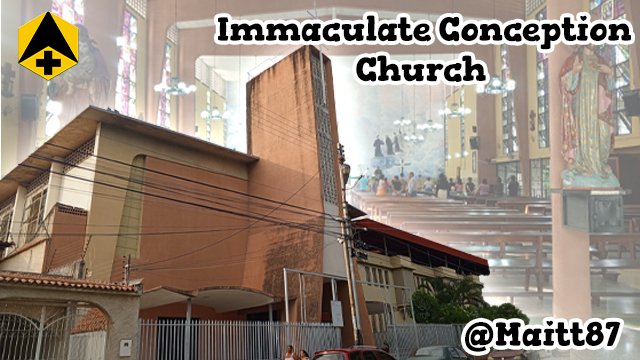
The 1960s marked a before and after in Venezuelan architecture, a time when the country sought to define a national architectural identity. It was then that the Modern Movement made its entrance, profoundly influencing the aesthetics of many buildings, especially churches. A clear example of this transition is the Immaculate Conception Church, located in La Barraca, Maracay, Aragua, which was inaugurated on December 3, 1960.
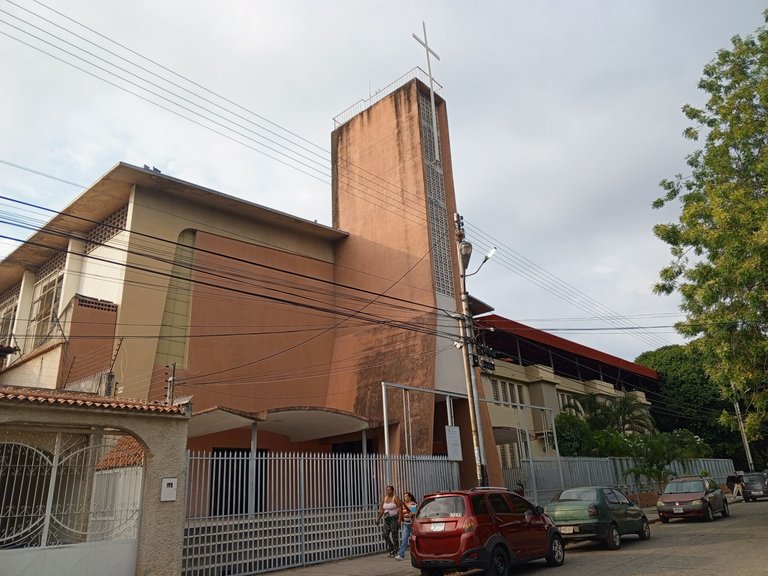
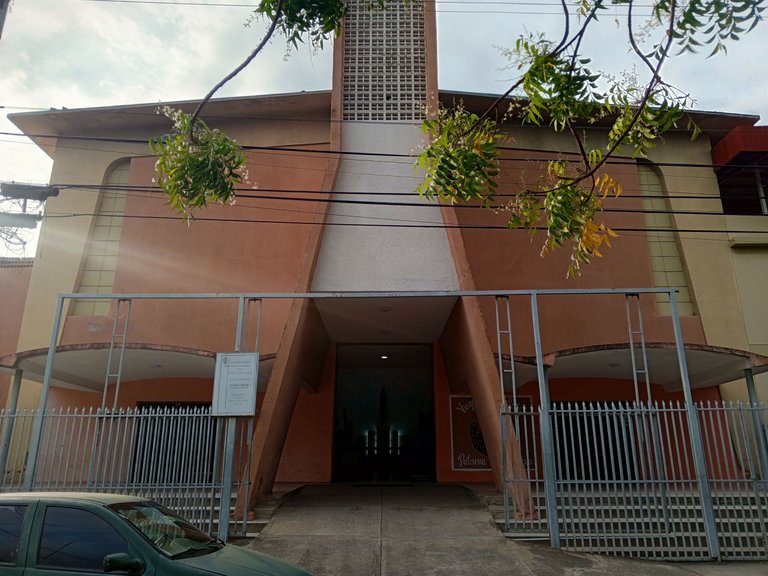
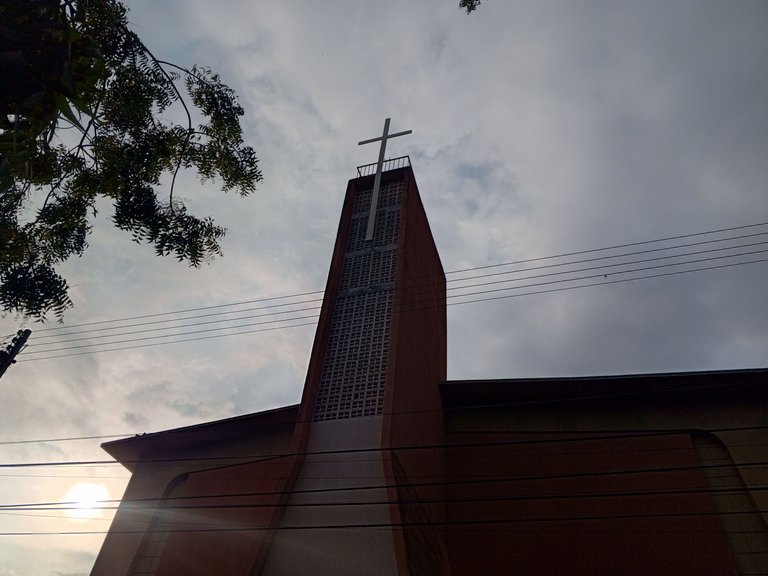
This building assumes the characteristics of the modern architecture that was beginning to consolidate in Venezuela. Its façade is a clear example of this style: straight lines, simple geometric forms and a sober volumetry. The tower, stylized and vertical, stands out among the other nearby constructions, an element that not only stands out visually, but also has a deep symbolism. This verticality, present in many churches, represents the connection between the earthly and the divine, a crucial point in the design of religious spaces.
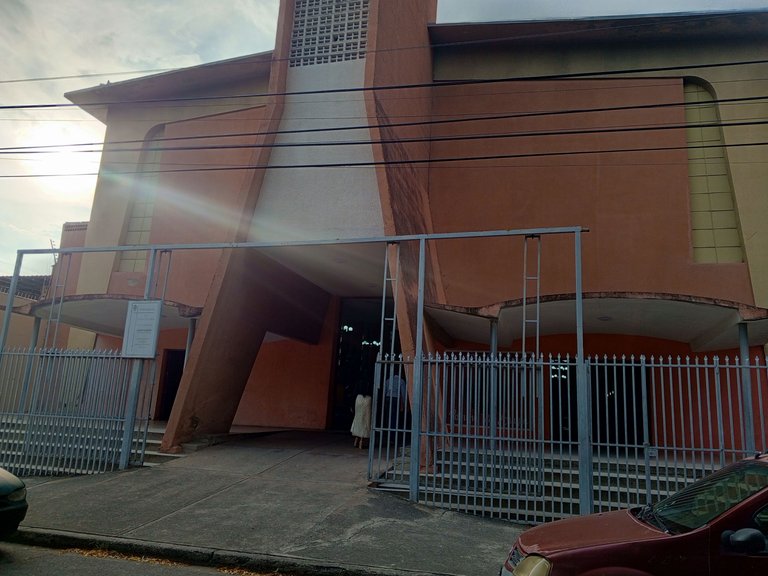
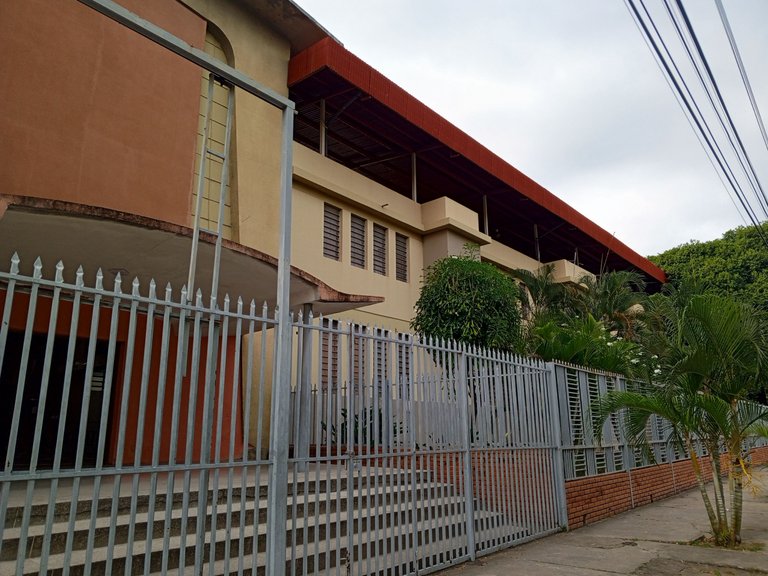
Despite the prominence of its tower, something that captivates me about this church is how, as a whole, it integrates harmoniously with its surroundings. From its façade, it might appear to be a simple church, but upon entering, the place reveals a universe of architectural details that justify its importance and beauty. It is a work that deserves to be appreciated calmly, to discover the richness hidden in every corner.
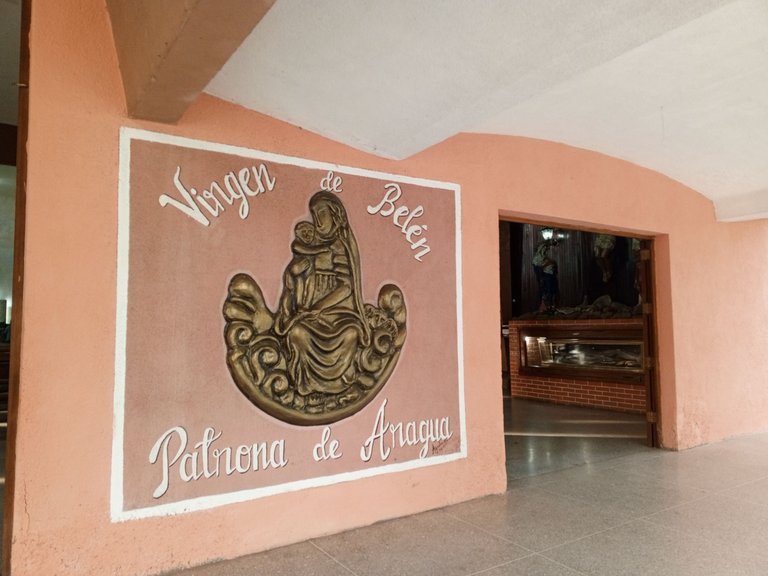
When crossing the threshold of the main door, double leaf and framed by a simple lintel, the interior welcomes us with spaciousness and luminosity. This space generates a feeling of serenity, ideal for moments of reflection and meditation. The church, more than a place of worship, becomes a spiritual refuge, where natural light flows generously through the large side windows. These windows not only allow light to enter, but also create a play of light and shadows that give the atmosphere a unique warmth.
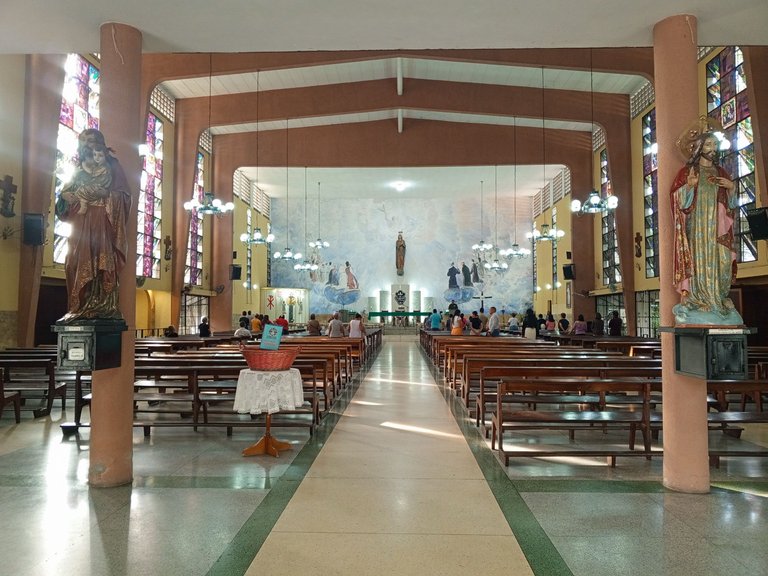
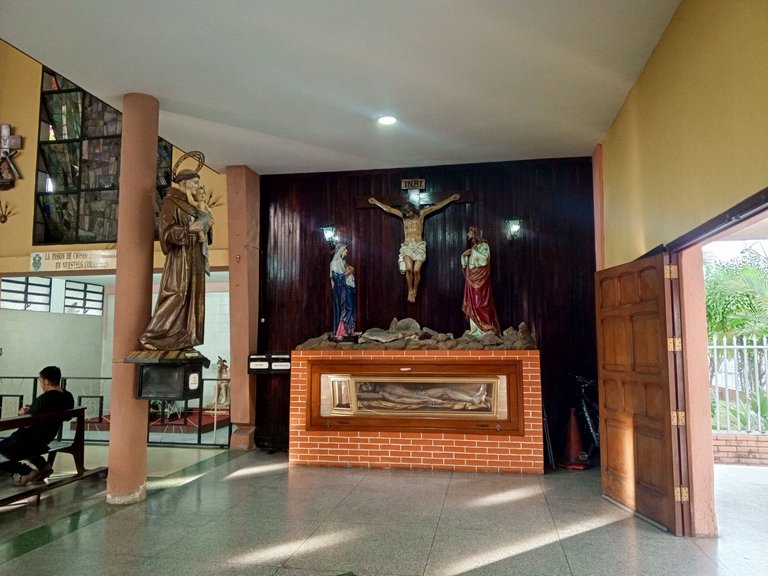
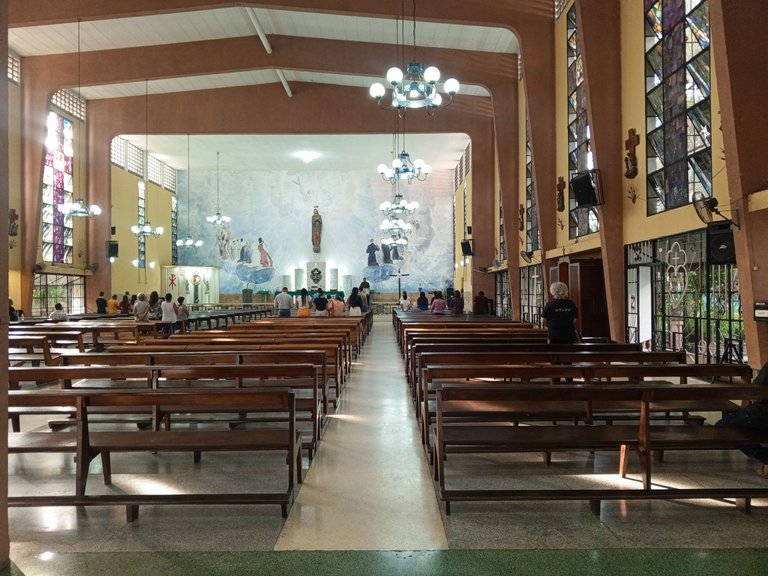
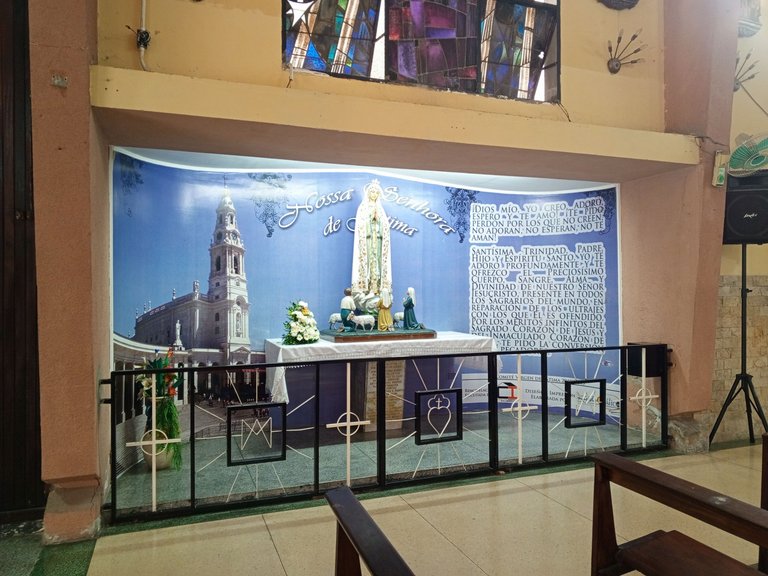
The stained glass windows are one of the most striking features of the interior. With intense and varied colors-reds, blues and violets-they not only add color, but also reinforce the sense of spirituality that permeates the place. The biblical and saintly depictions adorning the stained glass windows reinforce the sacred atmosphere, inviting visitors to connect with the divine in a deeper way.
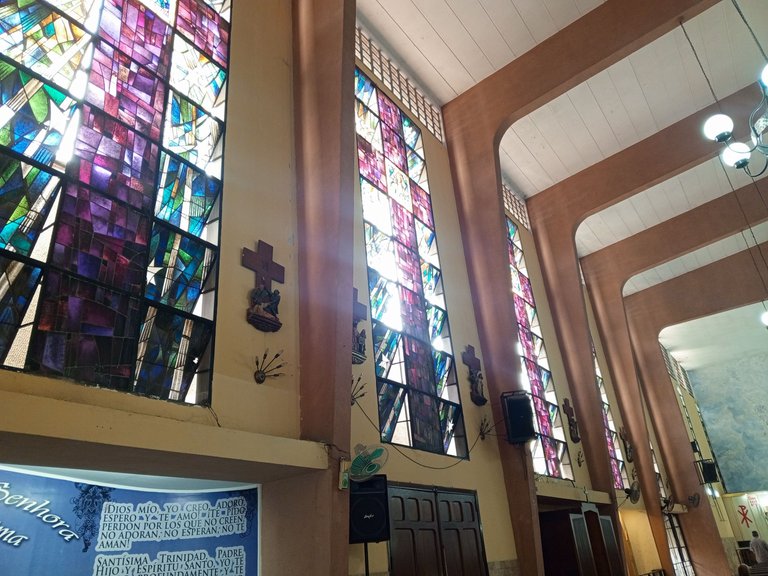
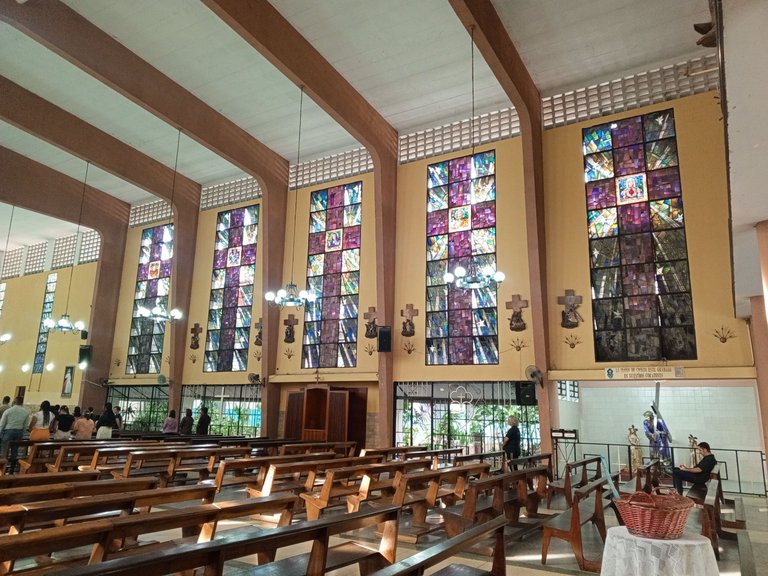
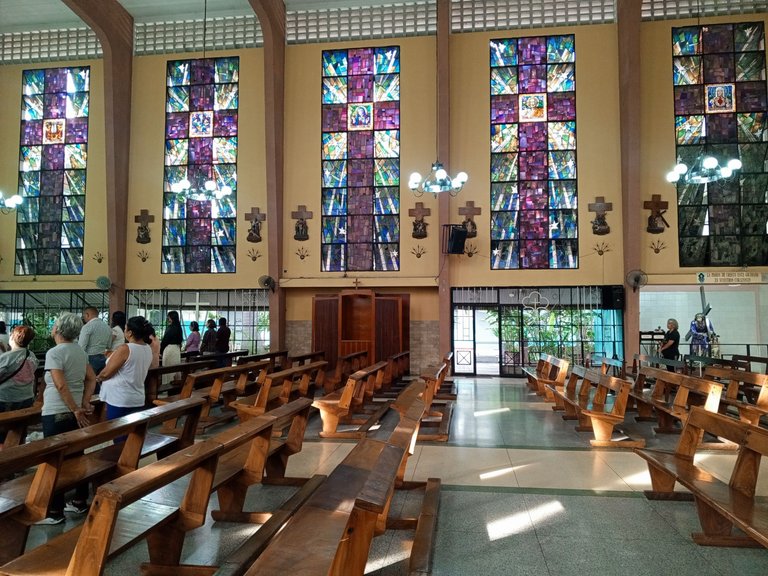
The furnishings, in line with the modern style, are simple, functional and sober. The pews are arranged in such a way that the entire space is visually connected to the altar, located in the center of the nave. The great lighting, both natural and artificial, allows the attention to be directed to the altar, letting the visitor's eyes focus on the central figure of the place. In my opinion, the interior of the church reflects an intimate and spiritual character that is achieved through the arrangement of the furnishings, the carefully thought-out lighting, and the austere but deeply meaningful decor.
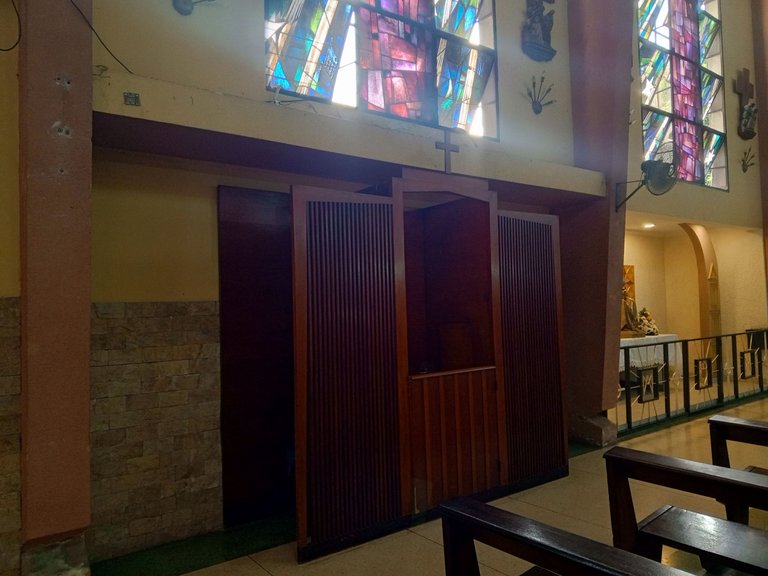
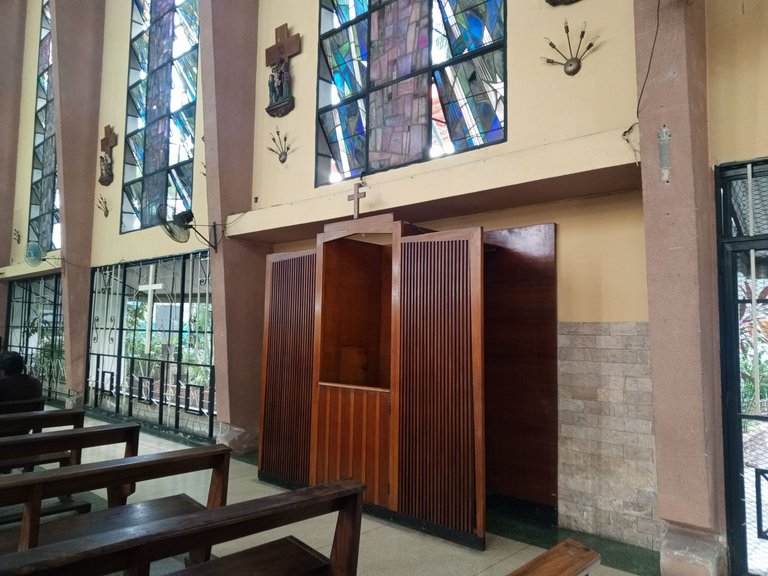
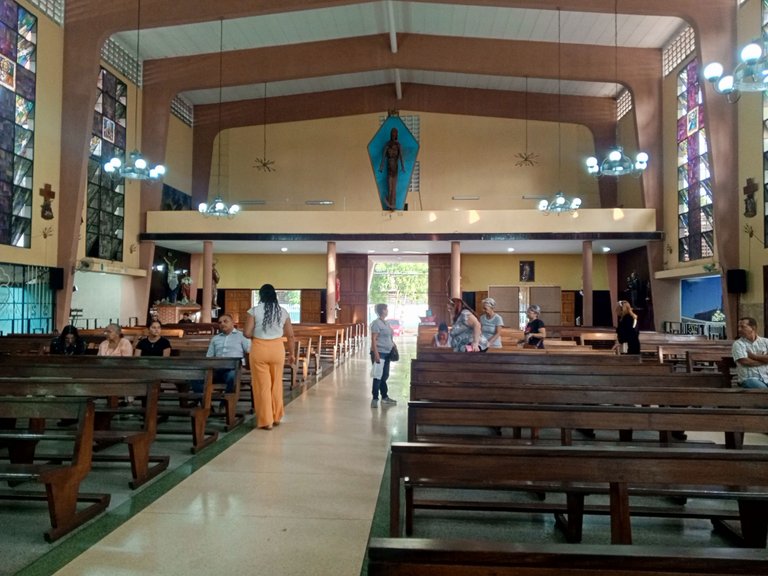
Finally, the focal point of the church is undoubtedly the altar. At the back, an impressive mural stands out, in which the central figure is the Virgin Mary, accompanied by saints, angels and the representation of the Holy Trinity. This mural has always captivated me since I was a child, and what attracts me most is the palette of warm and soft colors, which invite contemplation without saturating the view. This mural is not only a work of art, but it symbolizes the peace and devotion that the whole space is meant to convey.
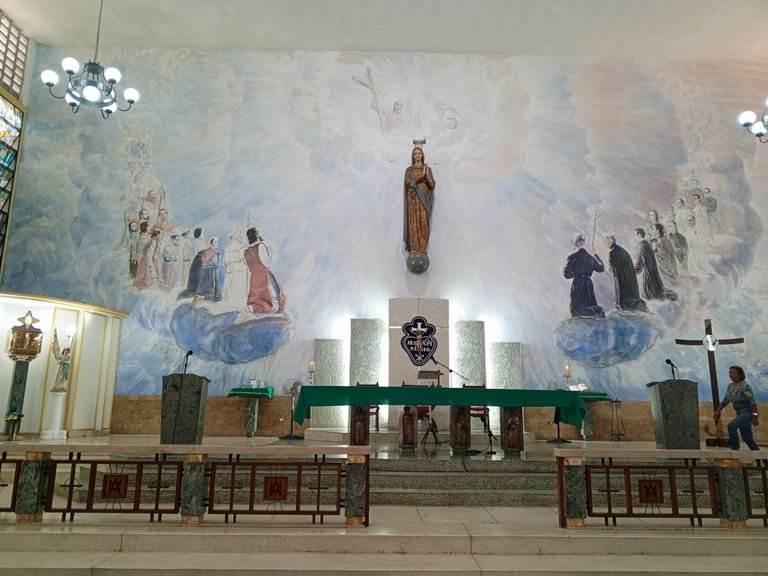
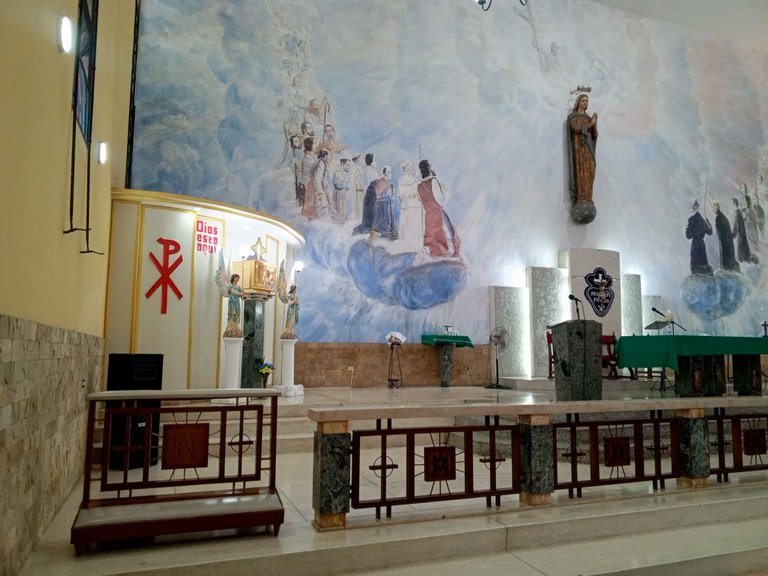
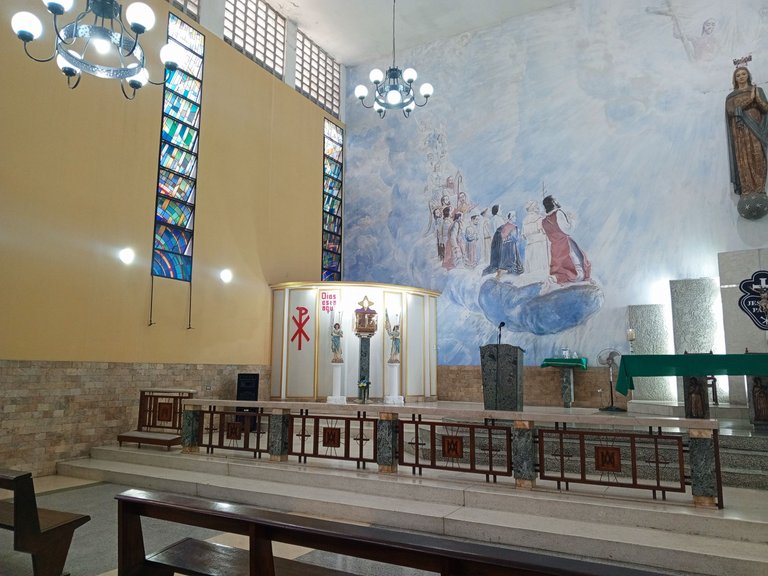


The most beautiful thing about this church is how all its elements are perfectly integrated, creating an atmosphere of peace that invades the visitor from the moment he crosses the door. Every architectural detail, every play of light and shadow, every color and every shape has a clear purpose: to invite us to reflection and spirituality. When visiting this place, not only can we appreciate its design, but we also understand how the eras of construction influence the buildings. Despite the fact that more than 60 years have passed since its inauguration, the church is still relevant, not only in its architectural style, but also in the experience it offers to those who visit it. A testament to the durability of good design, it is still relevant and functional today.
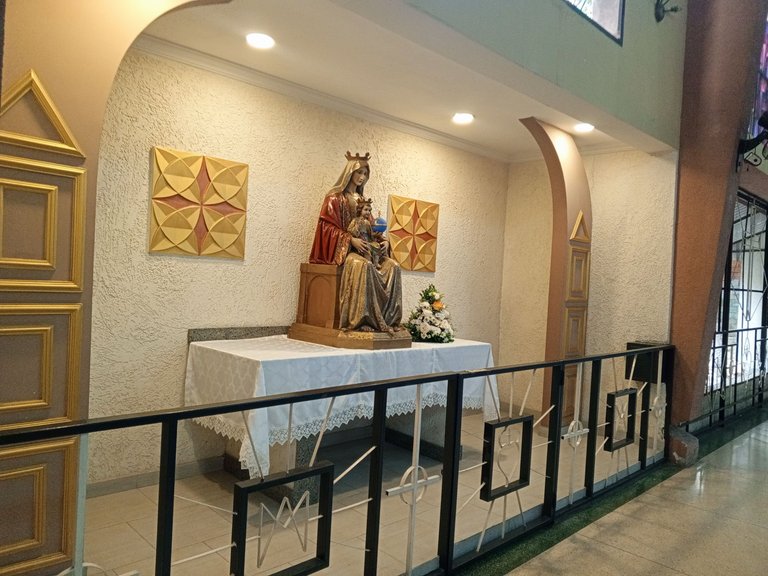
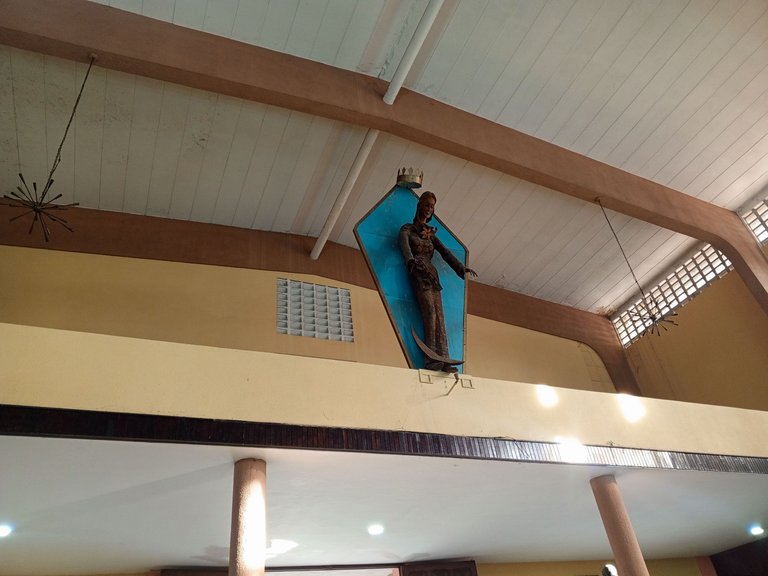
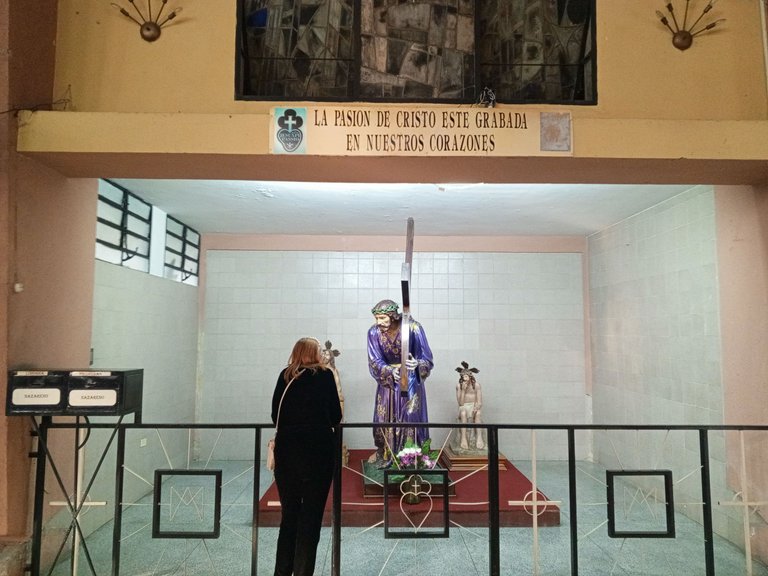
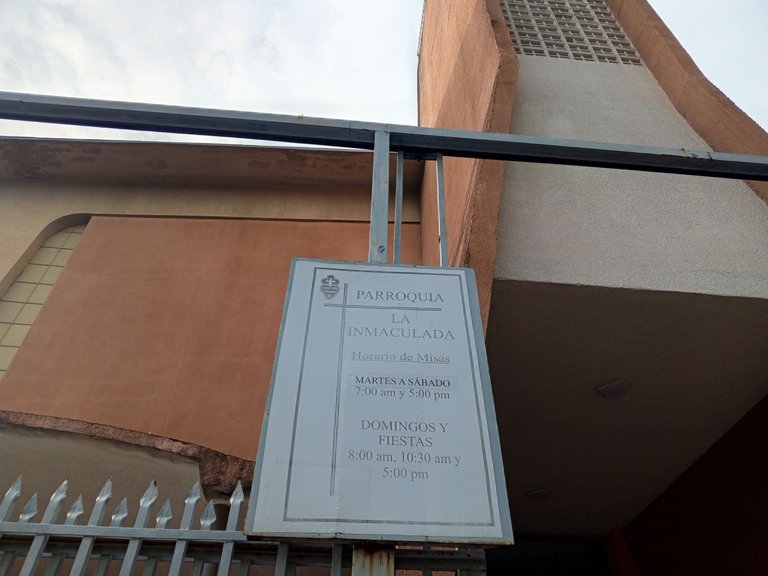

Resources Used
Camera: Tecno Spark Pro 10
Translator: Deepl
Source Consulted - Page 85
Location on Google Maps
Logo on cover is property of the Architecture+Design Community.

You can check out this post and your own profile on the map. Be part of the Worldmappin Community and join our Discord Channel to get in touch with other travelers, ask questions or just be updated on our latest features.